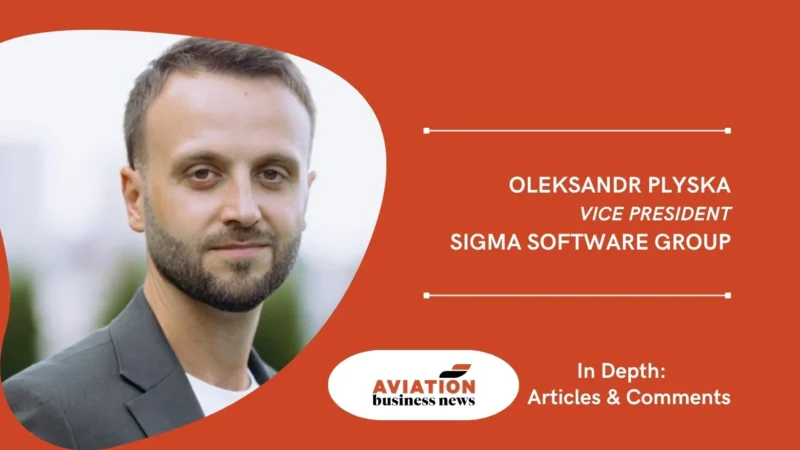In this third of a series of pieces for ABN on digital transformation Oleksandr Plyska, Vice President at Sigma Software Group, examines how legacy systems are holding the aviation industry back – and outlines practical strategies for modernising critical infrastructure without compromising safety or continuity.
In our first two articles, we explored how digital transformation is reshaping the passenger journey and how technologies like AI and IoT are redefining operational efficiency across aviation. But there’s a critical barrier that continues to stand in the way of progress: legacy technology.
Despite growing investments in innovation, almost all aviation companies still rely on decades-old systems. Aviation is one of the most mature and complex industries on the planet, so it’s no surprise that modernisation remains a massive challenge. According to recent IATA data, 80% of airlines now report legacy IT as a significant roadblock, up from 65% in 2019. That said, 75% are planning to transform by 2026 – and the industry can’t afford not to.
The risks are real. IATA’s 2024 report notes that downtime from failed system upgrades can cost airlines up to $400,000 per hour. Worse yet, nearly 50% of digital upgrades fail due to poor integration between old and new technologies.
The core challenge is compatibility. Legacy systems were never built to talk to modern platforms like AI, IoT, or cloud-based tools. And data silos are another major blocker. When systems can’t share information, it cripples everything from customer service to operations to revenue management.
But solutions are emerging. More airlines are turning to strategies like:
- Step-by-step modernisation to minimise disruption
- Middleware platforms to bridge old and new systems
- Microservices architectures for greater flexibility
- Cloud migration for scalability and speed.
At Sigma Software Group, we work with clients across aviation and beyond to tackle these exact issues. For Scandinavian Airlines, we replaced a critical budgeting system, cutting IT costs by 50% while maintaining business continuity. We’ve also modernised their charging systems with hybrid solutions that keep legacy components running while connecting them to newer, faster platforms. Our low-code tools have helped reduce development time and keep key flight operations running without interruption.
But tech is only half the battle. The real transformation happens when organisations build a culture that supports experimentation. In aviation, safety always comes first – and rightly so. But creating safe spaces for testing new ideas is essential. Companies need to develop that “experimentation muscle” – and that starts with empowering teams, embracing iteration, and making digital innovation a part of day-to-day operations.
And there’s another win: attracting top talent. Modern engineers and data scientists want to work where things move forward. By fostering innovation and partnering with experienced tech vendors, airlines can both solve today’s challenges and prepare for tomorrow’s.
Legacy systems may be the norm today, but they don’t have to define the future of aviation. With smart strategy, trusted partners, and a data-driven culture, even the most grounded organisations can soar again.
In our next article, we will explore why cybersecurity must become aviation’s next runway – a critical frontier in protecting innovation and ensuring safe skies for all.
Read Oleksandr Plyska’s other articles on ABN:
How airlines will compete based on the humanness of the digital experience
Data and AI tools are here. The question is are you ready to use them

